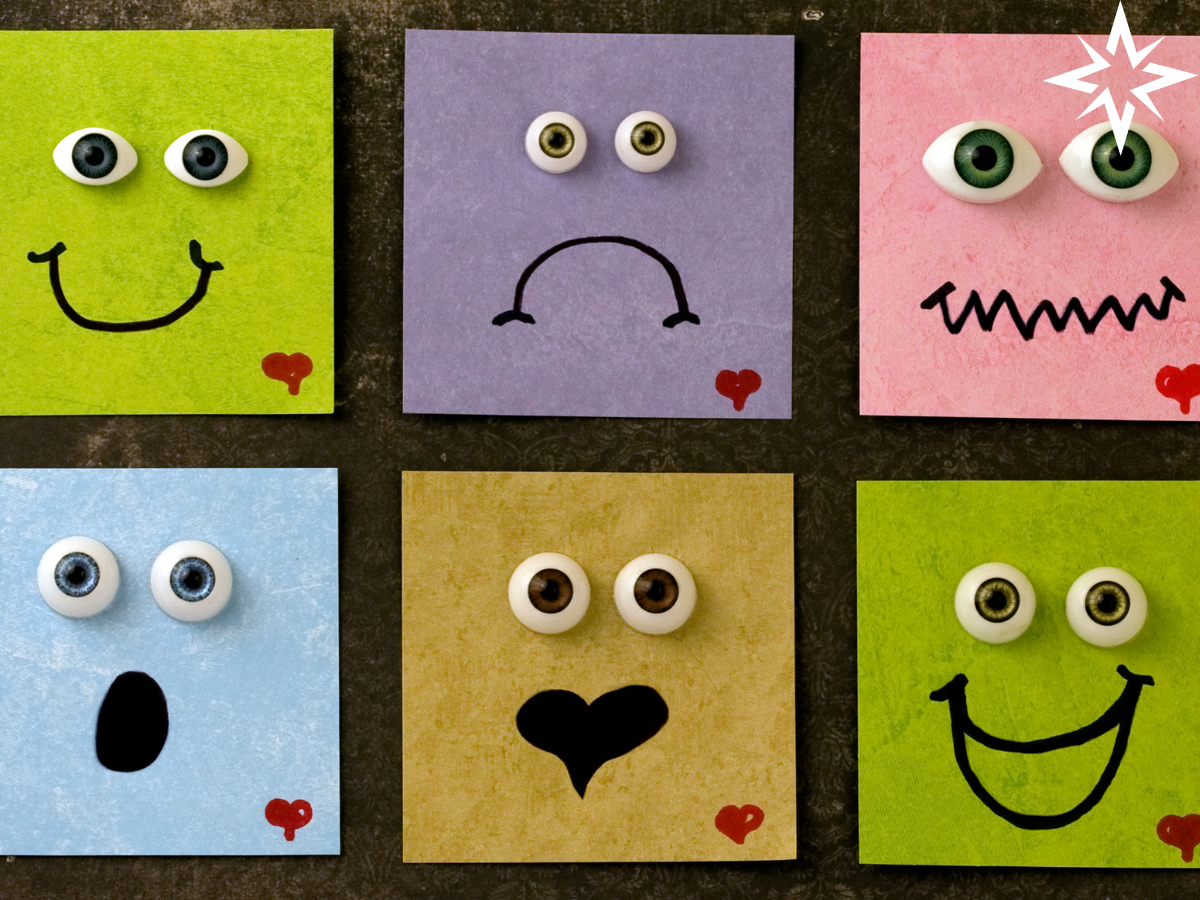The Culture of Communication
By Lydia N.
Emotion Notes from Getty Images Signature Created in Canva
In ancient Egypt, Egyptians used a form of writing known as hieroglyphics - carved pictures and images that represented things or ideas. In the Western world, we do not often think of pictures as a form of writing. While some Eastern languages use symbols to indicate words, Western languages use a series of letters to make words, each of which has a unique meaning. But, as technology has continued to develop, we can now communicate with people worldwide electronically. With the rise of texting, instant messaging, and social media, it seems that a new form of modern hieroglyphics has surfaced - emojis!
Emojis are everywhere, from the simple “:)” and “:(“ that our grandparents understand, to more modern emojis, like “💀” or “💃.” An emoji is an online text graphic used to convey an emotion or serve some other meaning and purpose while communicating online. Since the tone and intention of another person can be hard to read behind a screen, emojis help people communicate without having to use facial expressions.
A poll was conducted of NorthStar students to gain insight into what emojis people use. Of the 36 people polled, 29 were female and 7 were male. Given that 25% of people said they use emojis in nearly every message they send, we can see that emojis are a large part of the culture of communication in today’s society. For this study, emojis were divided into two groups - keyboard emojis and graphic emojis. Keyboard emojis are emojis created with keyboard characters, such as “:),” 0_o,” or “;-;”. Graphic emojis are the colorful cartoon-style pictures that phones come equipped with, such as “😊” or “🎉”. The way people use emojis, and the kinds of emojis they use, can differ drastically from one person to the next.
When asked if they would use different emojis with different people, 75% of participants said they would. One student said, “Just like how I interact with different people slightly differently in person, I use different emojis when talking to different people online (to some extent).” People gave several different reasons why they may change their emoji tone. Students said they generally would not use the same emojis with teachers as they would their friends, as this would seem more informal or even rude. One student said they would refrain from using more nuanced emojis with acquaintances in an effort to be as polite and clear as possible. Chatting with NSAers versus texting with friends outside of NSA also affects the kinds of emojis people use. Others claimed that emojis could even be used as inside jokes, that the pacing of a conversation may lead them to use emojis more or less frequently, or that they tailor their emoji usage to fit the other person’s interests and texting style.
Students were also asked what emojis they used most frequently. For keyboard emojis, the most popular answers were as follows:
:) - 20 students
XD - 15 students
:D - 10 students
:( - 8 students
._. - 7 students
For graphic emojis, the most frequently used emojis were as follows:
😂 - 18 students
😭 - 12 students
❤️ - 10 students
😊 - 10 students
👍 - 8 students
While some of these emojis were used frequently by both genders, others were largely gender specific. For example, only girls included the graphic heart emoji (❤️) in their most frequently used emojis. The top graphic emoji for boys was the smile emoji (😊) which four boys claimed as one of their top emojis. Considering the fact that only 7 boys responded to the poll, this is quite high. Many participants included unique emojis like, “👽,” “😺,” “👀,” “🌞,” “🧀,” and “🔥” that no one else picked as their “top emoji.”
Lastly, participants were asked if they believe that emojis help them communicate better online, to which 97% responded yes!
Student Perspective
“Emojis make texting more fun. They add some life to a message.”
“Emojis help you communicate expressions that you aren't normally able to communicate from a distance. I am very cautious when using emojis because sometimes you choose the wrong one, [and] you could communicate something that you aren't trying to convey. If you are trying to communicate frustration, you could choose the angry emoji, but that can come across as angrier than you really are.”
“I like to use emojis to express my feelings.”
“When you're texting, people can't really see what [your] face is trying to say, which is why I like emojis… Emojis add a different tone to a sentence.”
“Emojis encourage a softer, friendlier conversation. This is fantastic in text form, as it helps the reader feel more comfortable in the corrections or advice the person may be suggesting.”
Columns: 🔎Informational 🧑🚀NSA Culture
Emojis have become part of the culture of online communication. They have become ingrained in the way we talk to one another, helping us to communicate clearly with others all around the world.

